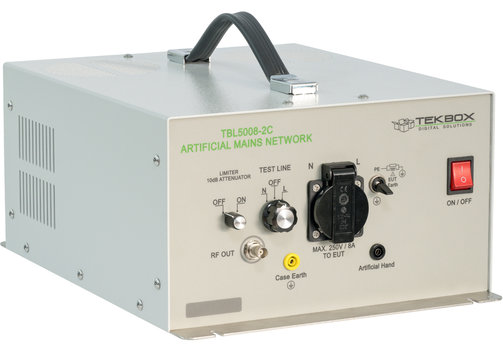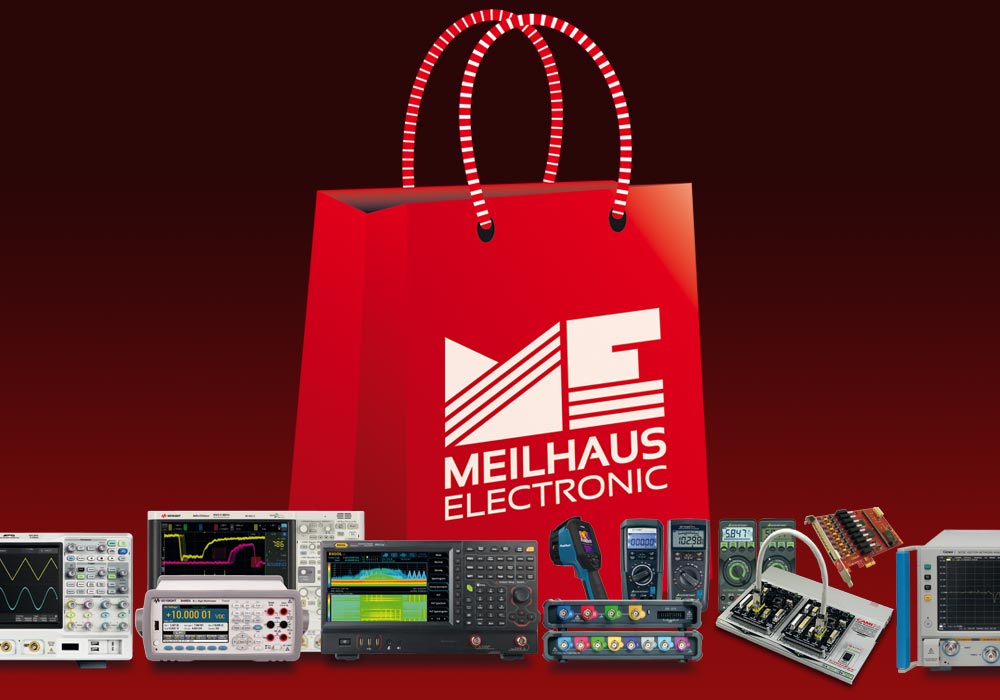TekBox LISN Series Line Impedance Stabilization Networks - Overview

Tekbox LISN Series Stabilisation Networks
- For the measurement of line-conducted interferences and noise measurements.
- Models with various frequency ranges and technical specifications.
- The ideal solution for pre-compliance EMC testing etc.
Model Overview
| Model | Description |
| ▸TBL00705-2 | 0.7 µH line impedance stabilisation network LISN |
| ▸TBL0110-2 | 1 µH 10 A line impedance stabilisation network LISN |
| ▸TBL0225-2 | 2 µH line impedance stabilisation network LISN |
| ▸TBOH01 | 5 µH DC line impedance stabilisation network LISN |
| ▸TBL0550-1 | 5 µH 50 A line impedance stabilisation network LISN |
| ▸TBL05100-1 | 5 µH 100 A line impedance stabilisation network LISN |
| ▸TBL05100-1-B | 5 µH 100 A line impedance stabilisation network LISN |
| ▸DC-LISN-Combo1B | Bundle: 2x TBOH01, 1x TBLM02, 1x BNC termination, 1x N-male to BNC-male 75 cm RG58, 2x BNC-male to BNC-male 35 cm RG223 |
| ▸TBLM02 | Line impedance stabilisation network LISN Mate |
| ▸TBL5008-2B | 50 µH 8 A AC line impedance stabilisation network LISN |
| ▸TBL5008-2C | 50 µH 8 A AC line impedance stabilisation network LISN |
| ▸TBL5016-1 | 50 µH 16 A line impedance stabilisation network LISN |
| ▸TBL5016-2B | 50 µH 16 A line impedance stabilisation network LISN |
| ▸TBL5016-2C | 50 µH 16 A line impedance stabilisation network LISN |
| ▸TBL5016-3 | 50 µH 16 A line impedance stabilisation network LISN (EU, US, AU, or UK) |
| ▸TBL5032-3 | 50 µH 32 A line impedance stabilisation network LISN (EU, US, AU, or UK) |
| ▸TBL50100-1 | 50 µH 100 A line impedance stabilisation network LISN |
| ▸TBLDC32-2 | V-Y-Δ DC-LISN |
Frequently Asked Questions:
Question: What is a LISN and what is it used for?
Answer: LISN is the abbreviation for Line Impedance Stabilization Network (also called AMN/Artificial Mains Network). These are low-pass filters that are usually connected between the DC/AC source and the DUT (device under test). The LISN simulates supply networks (low-voltage network, on-board network of a motor vehicle, aircraft, etc., telecommunications network). LISN are used for both line-based and radio-based EMC (electromagnetic compatibility) tests, which are specified in various standards (e.g. CISPR, CENELEC, MIL-STD, etc.). The tasks of a LISN include the suppression of RF interference that may be present on the supplying network. It also provides a normalized impedance on the line voltage side for the DUT. The LISN also provides a defined connection between the DUT, the supply network and the measuring device: For further measurement and analysis, e.g. with a spectrum analyzer, the LISN ensures the decoupling of RF interference voltage that is superimposed on the supplying mains voltage of the DUT. [Source: Wikipedia]
Information on product safety:
Manufacturer:
TekBox Digital Solutions Vietnam Co. Ltd., Saigon Hi-Tech Park, Factory 4, 4F, Lot I-3B-1, N6 Street, Thu Duc City, 700 000 Ho Chi Minh City/VNM
www.tekbox.com
Responsible person:
Meilhaus Electronic GmbH, Am Sonnenlicht 2, 82239 Alling/DEU
info@meilhaus.com
Related Products
Customers also bought
Last seen












































